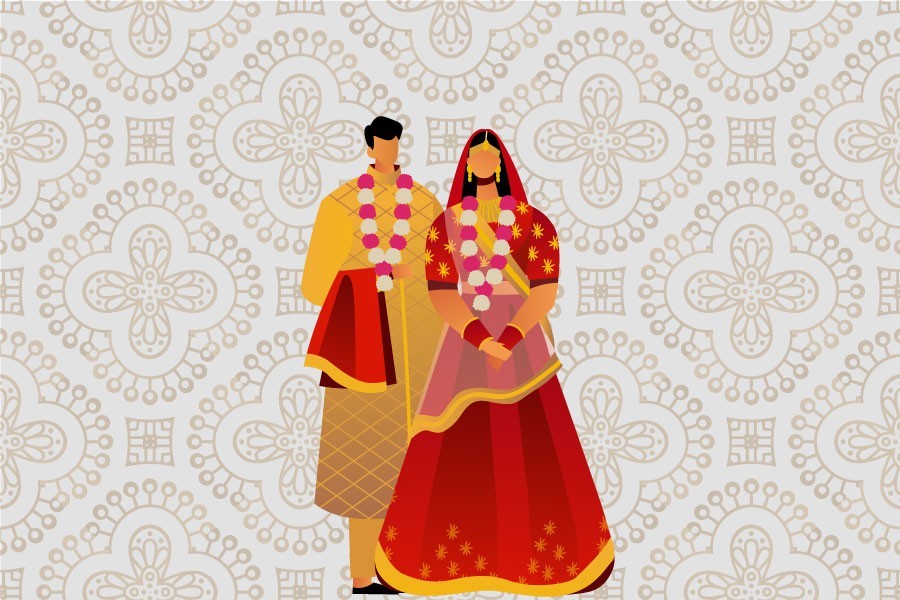Compared to the imposing gates to the wedding residences, even in villages today, those erected at entrances in the past may now seem ridiculous.The gates once comprised two banana trees erected with a gap of a few feet between them. A few sliced and curved bamboo pieces, colour paper cut-outs hanging from them, joined the banana trees. Their simplicity and humbleness were proverbial. Made of multi-colour cloth pieces, folded and spread artfully, the modern versions of these gates built on wooden structures are neatly lined with small light-bulbs at night. These gates often compete with the others in height and width. Making of wedding gates has for ages been part of wedding ceremonies in the Sub-continent.
The European or North American weddings feature pure simplicity. Perhaps this is the reason wedding organisers in the olden days would lay special emphasis on sublime colours --- with the bashful and humble-looking brides and grooms entering the wedding venue blossoming in white. The tradition stays on in many communities. In conformity with the quintessential message of a marriage --- the quest for conjugal peace, the conservative elders supervising the functions try to eschew all kinds ofgaudinessin many developed societies. They also try to limit the main wedding ceremony to a highly selected number of guests. Unlike the South Asian style of weddings, they stress more on the spiritual aspects of marriage.
In the sub-continent, the very concept of marriage continues to pick the elements of glitz and showiness. Under the weight of these external formalities, the very inner message of the union of two souls, i.e. the would-be husband and wife becomes convoluted. However, it is also true the about-to-be wedded man and woman do not remain deprived of the blessings of the elders and near and dear ones. With this aspect remaining unspoiled, the excesses in pageants and sumptuous feasts do not arouse much disapproval. In the digital age dominated by ever-innovative whizz kids, the wedding customs and rituals continues taking newer digital forms. Bangladesh cities and villages are no exception.
Thanks to their being advanced in almost every matter of decorative design and taste, the urban people are seen going about their own styles different from those followed in villages.
But the irony is, as time wears on the difference between urban and rural expanses continues being narrowed down. Watching a rural wedding on being inside it or from a close distance is expected to enrich neutral persons with new experiences. Some of these experiences carry elements of surprise as well as those of the false idea about the rural people's affluence.
As for example, let's turn to the tradition of 'Gaye Holud', a marriage-related ritual. It used to be celebrated in the evening prior to the day of wedding. In the Bangladesh villages, it was the well-to-do feudal lords and rich farmers who would compulsorily observe the merry event. It would be participated mainly by teenage girls and young women amid traditional wedding songs and dance numbers centring round the bride and the groom. Organising the event used to cost extra sums of money.
Amid the declining trends in rural economy, the custom at one point of time began fading out. In its continuing process of losing appeal, on mainly economic grounds, the 'Gaye Holud' event once ended up being a forgotten chapter in rural weddings in Bangladesh villages.
The social scenarios don't remain static. In keeping with their ever-changing character, the many lost features of the rural wedding are staging a comeback, though accompanied by purely big-city entertainments, including night-long dance parties to the accompaniment of 'disco songs' blaring out from sound boxes. Many term it an aberrantly post-modernist invasion of villages.


